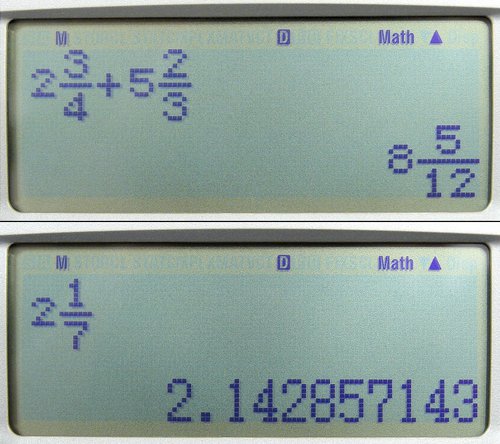创新背景
人们在日常生活中常常无意识控制着灯光,如戴上一副太阳镜,涂上防晒霜,关闭或打开百叶窗。
但对光的控制也可以以高科技的形式出现。如计算机,平板电脑或手机的屏幕;还有电信,它控制光以产生沿光纤电缆传输数据的信号。
创新过程
在一项新的突破中,研究人员使用一种只有三个原子厚的专用材料,可以比以往更精确地控制光。
为了理解这项工作,首先要记住光作为波存在,并且它具有称为偏振的性质,它描述了波振动的方向。想象一下,在一艘在海洋上摇晃的船上:海浪具有垂直极化,这意味着当波浪经过船下时,它会上下移动。光波的行为方式大致相同,只是这些波可以在任何角度偏振。如果一艘船可以驾驭光波,它可能会左右摆动,或者在对角线上,甚至以螺旋的方式摆动。

偏振非常有用,因为它允许以特定的方式控制光。例如,太阳镜中的镜片可以阻挡眩光(当光线从表面反射时,光线通常会变得偏振,例如汽车的车窗)。桌面计算器的屏幕通过偏振光并将其阻挡在区域中来创建清晰的数字。那些偏振光被阻挡的区域显示为暗,而那些没有阻挡光线的区域显示为浅色。

显示计算器,该计算器使用偏振光的属性来创建可读为数字和其他数字的明暗区域。
研究人员使用三层磷原子制造了一种可调,精确且非常薄的偏振光材料。该材料由所谓的黑磷构成,其在许多方面类似于石墨或石墨烯,由单原子厚层组成的碳形式。但是,虽然石墨烯层是完全平坦的,但黑磷的层是带肋的,就像一条灯芯绒裤子或瓦楞纸板的纹理。磷也有红色,白色和紫色的形式,由于其内部原子的排列而不同。
这种晶体结构使黑磷具有显著的各向异性光学性质。各向异性意味着它与角度有关,在像石墨烯这样的材料中,无论光偏振的角度如何,光都会被吸收和反射。黑磷非常不同,因为如果光的偏振沿着波纹对齐,它的响应与垂直于波纹对齐的响应非常不同。
当偏振光在黑磷的波纹上定向时,它与材料的相互作用与沿着波纹定向时不同。然而,许多材料可以偏振光,仅凭这种能力并不是特别有用。黑磷的特殊之处在于,它也是一种半导体,一种比绝缘体(如玻璃)导电性能更好的材料,但不如铜等金属。微芯片中的硅是半导体的一个例子。正如由硅构建的微小结构可以控制微芯片中的电流一样,由黑磷构建的结构可以控制光的偏振,因为电信号被施加到它们身上。

黑磷片,很像这种灯芯绒织物,是带罗纹的。
在手机屏幕和电视中发现的液晶显示(LCD)技术已经具有其中一些能力,但黑磷技术有潜力远远领先于它。黑磷阵列的“像素”可能比LCD中的像素小20倍,但对输入的响应速度却快了一百万倍。
创新关键点
研究人员使用三层磷原子制造了一种可调,精确且非常薄的偏振光材料。该材料由所谓的黑磷构成,其在许多方面类似于石墨或石墨烯,由单原子厚层组成的碳形式。
创新价值
新技术所带来的速度对于观看电影或在线阅读文章不是必需的,但它们可能会彻底改变电信业。基于薄层黑磷的电信设备可以调整每个信号的极化,使其不会相互干扰。这将使光纤电缆能够承载比现在更多的数据。
这项技术还可以为基于光的Wi-Fi替代品打开大门,该领域的研究人员称之为Li-Fi。
Innovative development of special materials allows more precise control of the polarization of light
In a new breakthrough, researchers can control light more precisely than ever before using a specialized material just three atoms thick.
To understand this work, it's first important to remember that light exists as a wave, and that it has a property called polarization, which describes the direction in which the wave vibrates. Imagine being on a ship rocking on the ocean: the waves are vertically polarized, which means that as the wave passes under the ship, it moves up and down. Light waves behave in much the same way, except that these waves can be polarized at any Angle. If a ship could ride light waves, it might swing from side to side, or on a diagonal, or even in a spiral fashion.
Polarization is very useful because it allows light to be controlled in a particular way. For example, the lenses in sunglasses block glare (light usually becomes polarized when it bounces off a surface, such as a car window). The screen of a desktop calculator creates sharp numbers by polarizing light and blocking it in areas. Areas where polarized light is blocked appear dark, while areas where light is not blocked appear light.
The researchers used three layers of phosphorus atoms to create a tunable, precise and very thin polarized light material. The material is made of so-called black phosphorus, which is similar in many ways to graphite or graphene, a form of carbon made up of single-atom thick layers. But while the graphene layer is completely flat, the layer of black phosphorus is ribbed, like the texture of a pair of corduroy trousers or corrugated cardboard. Phosphorus also comes in red, white and purple forms, depending on the arrangement of its atoms.
This crystal structure gives black phosphorus significant anisotropic optical properties. Anisotropy means that it is Angle dependent, and in a material like graphene, light is absorbed and reflected regardless of the Angle at which it is polarized. Black phosphorus is very different because if the polarization of light is aligned along the ripple, it responds very differently than if it is aligned perpendicular to the ripple.
When polarized light is oriented on a ripple of black phosphorus, it interacts differently with the material than when it is oriented along the ripple. However, many materials can polarize light, and this ability alone is not particularly useful. Black phosphorus is special in that it is also a semiconductor, a material that conducts electricity better than insulators, such as glass, but not as well as metals such as copper. The silicon in a microchip is an example of a semiconductor. Just as tiny structures made of silicon can control the current in a microchip, structures made of black phosphorus can control the polarization of light as electrical signals are applied to them.
Liquid crystal display (LCD) technology, found in mobile phone screens and televisions, already has some of these capabilities, but black phosphorus technology has the potential to go far ahead of it. The "pixels" of a black phosphorus array may be 20 times smaller than those in an LCD, but they respond a million times faster to input.
智能推荐
新材料 | 创新利用”catholyte”开发新材料可使植入式电池更持久
2022-11-07研究人员提出了一种新方法来提高这些不可充电电池的能量密度,种技术可以使使用寿命增加50%。
涉及学科涉及领域研究方向新材料 | 创造纳米多孔结构以开发高度隔热性木质绝缘材料
2022-09-22创新制造纳米多孔结构,通过控制沉淀过程创造高精准的纳米孔隙率,从而产生纳米嫌我网络,开发新型木材绝缘材料。
涉及学科涉及领域研究方向新材料 | 利用新型框架可控制材料中的无序结构
2022-10-11加州理工学院的研究人员开发了一个框架来设计新材料,通过模仿隐藏在自然生长模式中的基本规则,可以创建具有特定可编程特性的设计材料。
涉及学科涉及领域研究方向新材料 | 利用“焦耳热闪蒸”节能技术将汽车废塑料变成石墨烯
2022-07-01美国莱斯大学研究团队利用焦耳热闪蒸技术,使用电流加热碳,将二手车塑料转换成高质量石墨烯,为车辆产生的垃圾提供了一个潜在处理办法,并为环保生产石墨烯提供了新思路。
涉及学科涉及领域研究方向